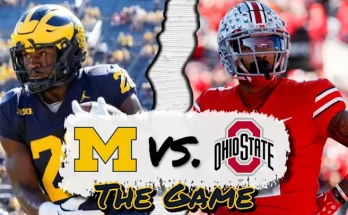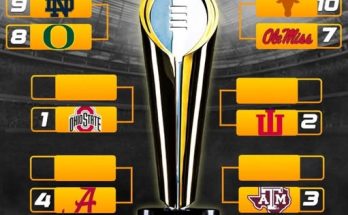Every year, Gamecock WBB loses $5 million. Why South Carolina accepts that — for the time being
The South Carolina Gamecocks Women’s Basketball (WBB) program, one of the most successful and high-profile college basketball teams in the United States, faces a unique financial situation. Despite losing a significant amount of money annually—estimated at $5 million—South Carolina’s athletic department continues to support and invest in its women’s basketball program. There are several factors that explain why the university, its administration, and its stakeholders accept this financial loss, at least for the time being.
A Historical and Cultural Context
South Carolina has a long history of investing in its athletic programs, including its women’s sports teams. While many programs in college athletics are known for prioritizing the more commercially viable men’s teams, such as football and men’s basketball, the Gamecocks have made a concerted effort to elevate women’s sports, particularly women’s basketball. This commitment can be traced back to the Title IX legislation passed in 1972, which mandated that educational institutions provide equal opportunities for women in sports. The Gamecocks, however, have taken this commitment a step further by making substantial financial investments and focusing on building competitive programs in women’s basketball, volleyball, and soccer.
South Carolina’s women’s basketball team has become a beacon of success in the sport, not only in the Southeastern Conference (SEC) but across the country. Under the leadership of head coach Dawn Staley, the Gamecocks have consistently been a national powerhouse, competing for NCAA titles and establishing a winning tradition. Staley’s impact goes beyond her coaching abilities—she has helped elevate the profile of women’s basketball in a state and region that historically prioritized football and men’s basketball.
A Culture of Success and Competitive Advantage
South Carolina’s women’s basketball team has reached elite status under Staley, winning the NCAA Championship in 2017 and making multiple Final Four appearances. These successes have not only brought national recognition to the university but have also helped to strengthen the Gamecocks’ brand as a premier athletic institution. While the financial losses associated with the program are significant, the prestige and visibility that the program generates play a major role in offsetting some of the costs.
The Gamecocks’ success on the court has translated into heightened national attention for the university as a whole. The team’s accomplishments bring pride to the state and serve as a point of pride for alumni and fans alike. This connection fosters loyalty and passion, which can have a long-term impact on the university’s ability to raise funds, recruit top-tier talent for other athletic programs, and build stronger community support. The visibility that comes with a successful women’s basketball program is invaluable for South Carolina, even if the immediate financial return is not substantial.
Brand and Community Impact
South Carolina is situated in a state that places a strong emphasis on its athletic programs, particularly in the world of college sports. The state is passionate about the University of South Carolina Gamecocks, with a deeply ingrained college sports culture that includes fervent support for both men’s and women’s teams. The Gamecocks women’s basketball program has become an integral part of this culture, drawing large crowds to Colonial Life Arena and inspiring young athletes across the state.
Beyond the direct financial impact, the Gamecocks women’s basketball program helps raise the profile of the university’s brand. Successful teams increase overall university visibility, which can lead to increased applications, donations, and a stronger overall reputation. This can be beneficial in multiple ways: a higher profile can attract potential students and faculty, assist in securing sponsors for other programs, and build valuable partnerships with donors who are motivated to support high-profile teams. Women’s basketball, in particular, has made a positive mark on the university’s image, showing a commitment to gender equity and fostering a sense of inclusivity.
The Gamecocks women’s basketball team’s rise to prominence also has a positive effect on the local economy. Game day brings thousands of fans into Columbia, South Carolina, with fans filling local hotels, restaurants, and businesses. This impact is particularly important for small businesses and the tourism industry, which benefit from the influx of out-of-town visitors for major games and tournaments.
The Financial Reality of College Sports
While the Gamecocks women’s basketball program may be operating at a loss on a yearly basis, it is important to understand the larger financial landscape of college athletics. College sports, particularly at the Division I level, are expensive to maintain. Football and men’s basketball, which typically bring in the most revenue for athletic programs, often subsidize the costs of other sports. Women’s basketball is no exception, and the cost of running a top-tier program includes expenses related to scholarships, salaries for coaching staff, travel, facilities maintenance, marketing, and equipment. For a program like South Carolina’s, with its ambitions to compete at the highest level, the costs can quickly outpace the revenue generated from ticket sales, sponsorships, and merchandise.
However, many university athletic departments, especially in power-conference schools, are accustomed to operating at a loss in non-revenue sports, understanding that the long-term benefits far outweigh the short-term financial challenges. These programs are seen as investments in the university’s future, and athletic success is often considered a necessary component of a comprehensive collegiate experience. In this context, the $5 million loss is a tolerable expense for South Carolina, given the multitude of indirect benefits that a successful women’s basketball program can bring.
Moreover, women’s sports as a whole are experiencing significant growth in terms of visibility, fan engagement, and media rights deals. While the financial situation of women’s basketball is not yet on par with that of men’s sports, the increased media coverage and support for women’s sports may eventually lead to more sustainable financial models. Programs like South Carolina’s are at the forefront of this growth, and the Gamecocks’ willingness to support a program that is not yet financially self-sustaining reflects a long-term commitment to the future of women’s sports.
The Influence of Coach Dawn Staley
One of the driving forces behind the success and sustained investment in the Gamecocks women’s basketball program is head coach Dawn Staley. Since taking over as head coach in 2008, Staley has transformed the program from a middling team into a perennial powerhouse. Her leadership has not only led to on-the-court success but has also helped elevate the national profile of women’s basketball. Staley’s success as a player, her advocacy for women’s sports, and her ability to recruit top-tier talent have made her one of the most influential figures in college basketball.
Staley’s ability to draw national attention to the Gamecocks program has made her a valuable asset to the university. Her leadership has helped secure major sponsorships, endorsements, and donations, making her an integral part of the program’s financial ecosystem. The positive attention generated by her success and the success of her players is a powerful marketing tool that has value far beyond immediate revenue generation. It has led to increased media coverage, merchandise sales, and support from fans, even as the program operates at a financial loss.
A Long-Term Investment
In the world of college athletics, financial loss in women’s basketball is not an uncommon situation, especially for high-profile programs like South Carolina’s. The Gamecocks’ willingness to continue supporting their women’s basketball team despite the annual loss of $5 million is a reflection of the university’s commitment to building a lasting and sustainable athletic program. While the financial loss is a reality, the indirect benefits that the program provides—including increased visibility for the university, community engagement, and the long-term growth of women’s sports—make the loss acceptable for now.
South Carolina’s women’s basketball program, led by the indomitable Dawn Staley, has become a cornerstone of the university’s athletic and cultural identity. As the program continues to grow in popularity, the hope is that increased media exposure, sponsorship deals, and broader fan engagement will eventually help close the financial gap. In the meantime, South Carolina’s commitment to supporting the Gamecocks women’s basketball team underscores the university’s belief in the value of investing in excellence, community, and gender equity.



